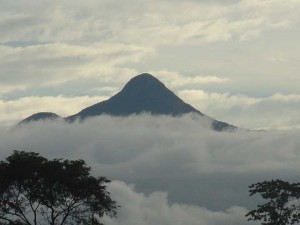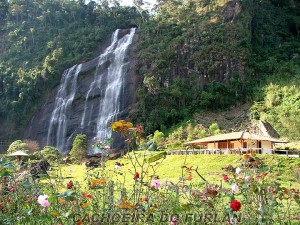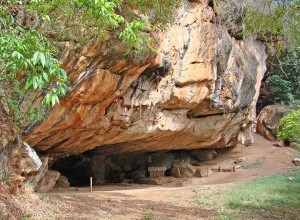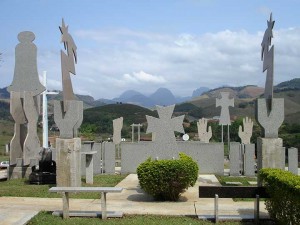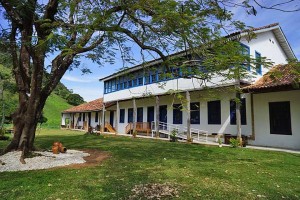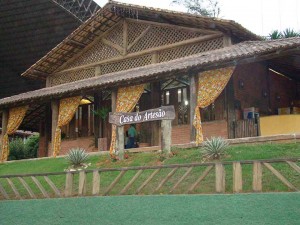Why Castelo
The name of the city has its origin related to the first adventurers in search of gold. Historical sources report that the name came about when one of the explorers came across feudal-style castle-like mountains. To reinforce, the mountain next to this formation had the appearance of walls around a castle. This rock formation is currently known as Pico do Forno Grande.
Colonization
There are two hypotheses that try to explain the beginnings of colonization in the municipality of Castelo.
Some researchers attribute to the Jesuits priests the burden of the foundation of the first settlements in the region of the mountains of Castelo, in the year 1625.
However, another interpretative perspective attributes to the Bandeirantes such feat. This doubt goes through history and persists to this day.
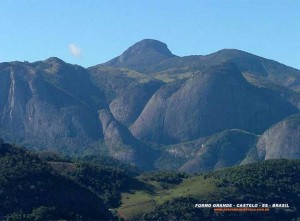
This is because there is still no historical documentary support for one of them to become majority.
First hypothesis: Jesuit action
The Company of Jesus Christ was founded in the year 1534 by the Spanish Inácio de Loyola. The Order was created in the context of the Catholic Reformation, also called Counter Reformation, as opposed to the Protestant Reformation initiated by Martin Luther.
From the beginning the Jesuits, who were also known as “soldier priests”, stood out for their missionary and educational work.
They quickly gained momentum within Europe and expanded into many countries and continents. They arrived in Brazil in the year 1549, brought by Governor General Thomé de Souza.
Led by Friar Manuel da Nóbrega, they were responsible for the founding of São Paulo de Piratininga and his famous college. They set out for their extensive work of indigenous catechization, founding villages called missions.
In the Espirito Santo, the Jesuits founded schools and villages in various places. In this endeavor stood out the figure of Father José de Anchieta, who arrived in Brazil in 1553. Along with him came another six Jesuit priests, all sick.
In our region, around 1625, the Jesuits would have founded the Missions of Monte Castello, composed of four reductions: the Caxixe, Ribeirão, Barra do Rio Castelo and Salgado.
In the “Castello” region, a church was also built in honor of Nossa Senhora do Amparo. She would have been the first within the Espirito Santo’s Captaincy.
Controversies
Many controversies surround the presence of the Jesuits in the mountains of the Castelo. Some scholars believe that in addition to indigenous catechesis and agricultural activities, priests were also seeking gold. However, to date no evidence has been found that they have started any mining activity.
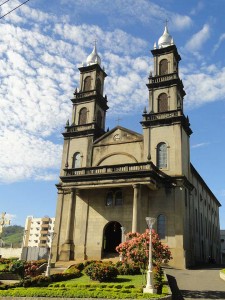
Second hypothesis: the bandeirantes
The search for gold motivated adventurers from all over the colony to embark on the interior of the Brazilian territory.
Abandoning the coast and risking all their luck on this journey, the Girl Scouts made their way through the dense forest and by 1695 succeeded in their journey, discovering the first nuggets in the Gerais region.
Although there was an intense race towards the Gerais, some bandeirantes followed other paths in search of precious metals, as was the case of bandeirante paulista Pedro Bueno Cacunda.
Cacunda was the pioneer of the gold mining activity in the “Serra do Castelo” and in the early eighteenth century, founded a village called Santana, in the region now known as Farm Povoação.
The village has become a reference for mining, with over two hundred people, livestock and intense food production.
Conflict with the Jesuit priests, difficulties in dealing with the natives, the inhospitable nature and lack of support from the Portuguese Crown have all abated the spirits of “bandeirante Pedro Bueno Cacunda” who, three decades later, withdraws from the region and will try luck in other lands.
Even after Pedro Bueno Cacunda’s departure from the Serra do Castello region, mining activity continued, although conflicts between Indians and prospectors were not uncommon.
In this scenario of animosities, the Jesuit priests stood out. They were responsible for maintaining, for some years, the fragile balance between the groups of the region.
However, with the expulsion of the Ignatian Order from Brazil in 1759, the truce in relations between the natives and explorers was broken, a fact that resulted in numerous battles.
The bloodiest of all occurred in the year 1771, at the entrance of the Grotto of Limoeiro, and the indigenous people emerged victorious, forcing the explorers to take refuge in the “Baixo Itapemirim”.
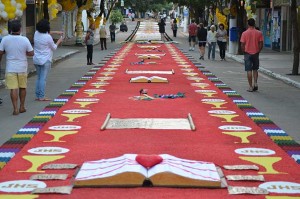
Constant Indian attacks contributed to the abandonment of the region until the early nineteenth century. However, the hope of making the region a major center for gold exploration never ceased to exist.
In 1816 a Royal Charter ordered the Governor of the State Francisco Alberto Rubim to “advance the examinations, the discovery and the mining of the Minas do Castelo”.
Despite all the efforts made, by 1830 the intensive search for the precious metal had ceased. The adventure continued only on the initiative of a few daring prospectors, crossing time and reaching the first decades of the twentieth century.
Even today, traces of gold exploration can be found throughout the region: rivers with deviated beds, channels carved in stone, deep grooves in the mountains, mounds of crowded gravel, and even the names of some communities: Bateia, Patrimônio do Ouro, Fazenda da Prata, Córrego da Prata.
